For motorsports applications—including racing, track day, and club events—inflation pressure recommendations take into consideration additional important factors beyond the scope of this guide.
See Bridgestone’s information for racing and track tire applications here:
Track Day Tire Pressure Recommendations Chart
Race Tire Operating Range Chart
This guide is broken down into five FAQs:
● Why is tire inflation pressure important?
● What are the proper inflation pressures for street applications?
● How do I check and set tire inflation pressure?
● What if inflation pressure is too low or too high?
● What about inflation pressure in other applications, like dirt or adventure riding?
Q: Why is tire inflation pressure important?
A: The inflation pressure carries the weight of the bike, helps prevent damage to the tire, and allows the tire to perform safely and as designed.
Pneumatic tires are dependent on inflation pressure to perform their most basic functions, including the following:
● Carry the load of the vehicle, passengers, and cargo.
● Transmit cornering forces and help direct the vehicle along a path.
● Provide acceleration and braking traction.
● Absorb road irregularities and provide ride comfort.
The right pressure in each tire helps optimize vehicle performance for these functions, and for things like tire wear and fuel economy. For instance, pressure is key to tire deformation and stiffness characteristics, and it governs the shape of the tire as it engages the road in the contact patch.
Tires are also dependent on inflation pressure for their own durability and for safe vehicle operation. Proper pressure is important to prevent the tire from becoming damaged or subject to failure, and for helping the vehicle perform as the manufacturer intended.
Q: What are the proper inflation pressures for street applications?
A: Vehicle manufacturers’ recommended inflation pressures are found on the vehicle placard or in the owners manual.
Vehicle manufacturers go through extensive testing and evaluations to determine various tire parameters and inflation pressure settings based on the specific motorcycle and its intended use. Tire manufacturers also have their own testing and performance requirements that depend on pressure to meet their own product expectations. Ultimately, it is the vehicle manufacturer that establishes and communicates the proper tire pressures for optimum vehicle performance, including for tire safety. These inflation pressure specifications can be found on a placard applied to the motorcycle frame as well as in the vehicle owners manual.
Vehicle manufacturer recommended inflation pressures are specific to the make and model of the motorcycle. Heavier motorcycles like cruisers, touring bikes, or adventure bikes tend to run higher pressures due to their own weight and rider and cargo capacity. On the other hand, dirt bikes tend to run lower pressures because they are much lighter in weight, have reduced load capacity, and have lower top speeds. Regardless of the type of motorcycle, check the frame placard and/or the owners manual for the proper tire specifications and inflation pressures.
Regardless of the type of motorcycle, check the frame placard and/or the owners manual for the proper tire specifications and inflation pressures.
The tire sizes and inflation pressure recommendations for the motorcycle are set to ensure that the load of the bike itself, rider(s), and cargo can be carried—and that the motorcycle will ride and handle safely—up to its maximum capacity. Overloading a motorcycle beyond vehicle manufacturer specifications is unsafe, regardless of whether the tires can carry the additional load
In addition, tire inflation pressure should not be increased beyond what the bike manufacturer recommends, including for attempts to accommodate excessive load. Bottom line: Don’t overload the motorcycle, and don’t exceed the pressures recommended by the motorcycle manufacturer.
What about the inflation pressure information that’s marked on the sidewall of the tire? This is the pressure necessary for the tire to carry its rated, maximum load. The motorcycle manufacturer’s tire pressure specifications may be lower than, or the same as, the pressure indicated on the tire sidewall. Check the motorcycle frame placard and/or the owners manual for the proper tire inflation pressures. <This will be a shaded box or sidebar, not necessarily in the body of the text.>
The motorcycle manufacturer’s tire pressure specifications may be lower than, or the same as, the pressure indicated on the tire sidewall. Check the motorcycle frame placard and/or the owners manual for the proper tire inflation pressures. <This will be a shaded box or sidebar, not necessarily in the body of the text.>
Q: How do I check and set tire inflation pressure?
A: Use a reliable gauge, and check and adjust the pressure only when the tires are cold.
The first step is to have a reliable gauge. An electronic or higher quality gauge may be worth the investment to some, but gauges don’t have to be fancy or expensive to get the job done. If you want to check the accuracy of your gauge, just ask your local tire shop to compare readings.
Check pressure when your tires are “cold.” A tire is considered “cold” if the motorcycle has been stationary for three hours or more. Tire pressure specifications established by the vehicle manufacturer on the frame placard and in the owners manual are for cold tires.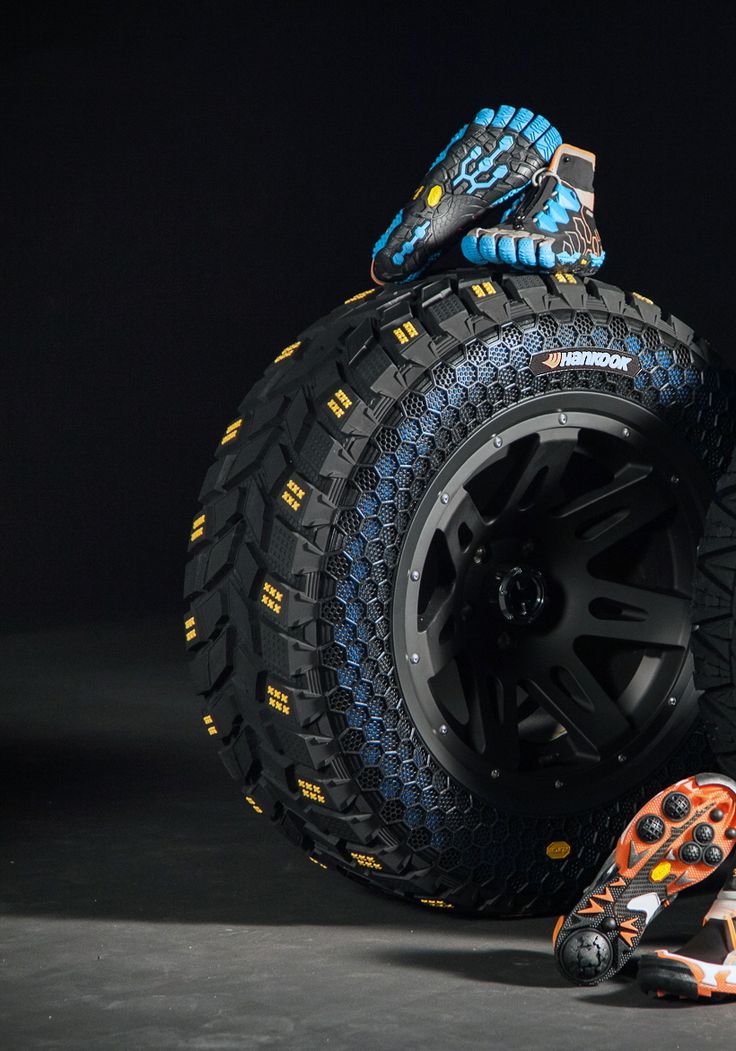 Although riding causes tire inflation pressure to increase, if the bike was parked for at least three hours before travelling less than a mile at moderate speed, the tires are still considered cold.
Although riding causes tire inflation pressure to increase, if the bike was parked for at least three hours before travelling less than a mile at moderate speed, the tires are still considered cold.
To check tire pressure, remove the valve cap, place the end of the gauge over the valve, press straight and firm, and observe the reading. From there, you can adjust the inflation pressure to reach the motorcycle manufacturer’s specifications. Remember to reinstall the valve cap when you’re done. Never release pressure from a “hot” tire to reach the recommended inflation pressure—if you do, you may dangerously underinflate the tire.
If you ride regularly, check your motorcycle tire pressure at least once a week. Also check pressure before going an extended trip—and before going on any trip if you’re an infrequent rider. Always use a gauge. A tire can look like it is properly inflated, even if it is not.
While you’re checking pressure, inspect the tread and sidewalls.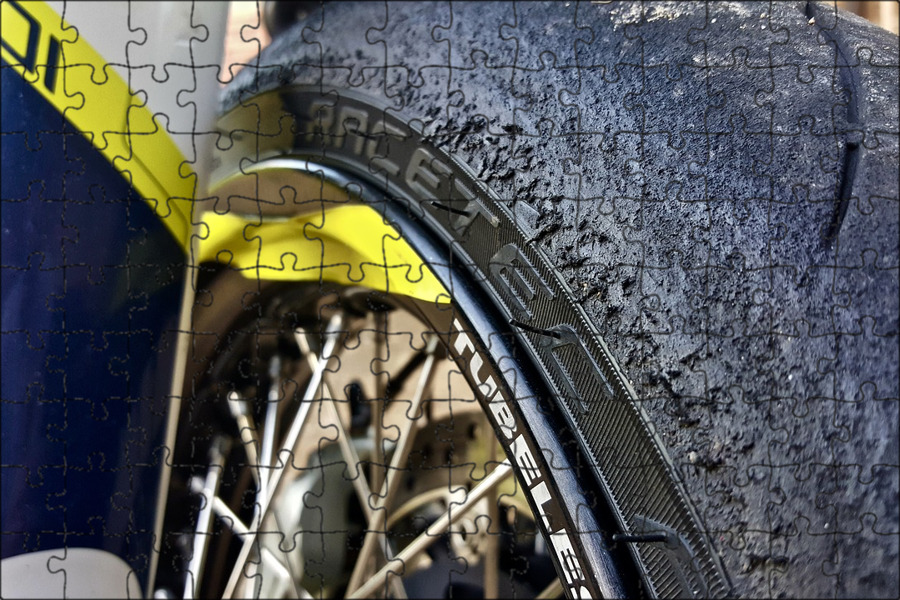 Make sure there is adequate tread depth and look for irregular wear, cuts, abrasions, bumps, bulges, or blisters. Although tires lose a small amount of pressure over time under normal conditions (and due to temperature drops) have your tire inspected by a tire service professional if a tire has unusual loss of inflation pressure or if you see any signs of damage. <This will be a shaded box or sidebar, not necessarily in the body of the text.>
Make sure there is adequate tread depth and look for irregular wear, cuts, abrasions, bumps, bulges, or blisters. Although tires lose a small amount of pressure over time under normal conditions (and due to temperature drops) have your tire inspected by a tire service professional if a tire has unusual loss of inflation pressure or if you see any signs of damage. <This will be a shaded box or sidebar, not necessarily in the body of the text.>
Q: What if inflation pressure is too low or too high?
A: Pressure that is too low can lead to internal structural damage of the tire. Pressure that is too high can allow for more external damage to occur to the tire. Both of which could lead to tire failure, a crash, serious injury or death.
Under-inflation causes excessive heat build-up due to excessive flexing of the tire, and eventually causes internal structural damage to the tire components. Over-inflation makes it more likely for tires to be cut, punctured, or broken by sudden impact.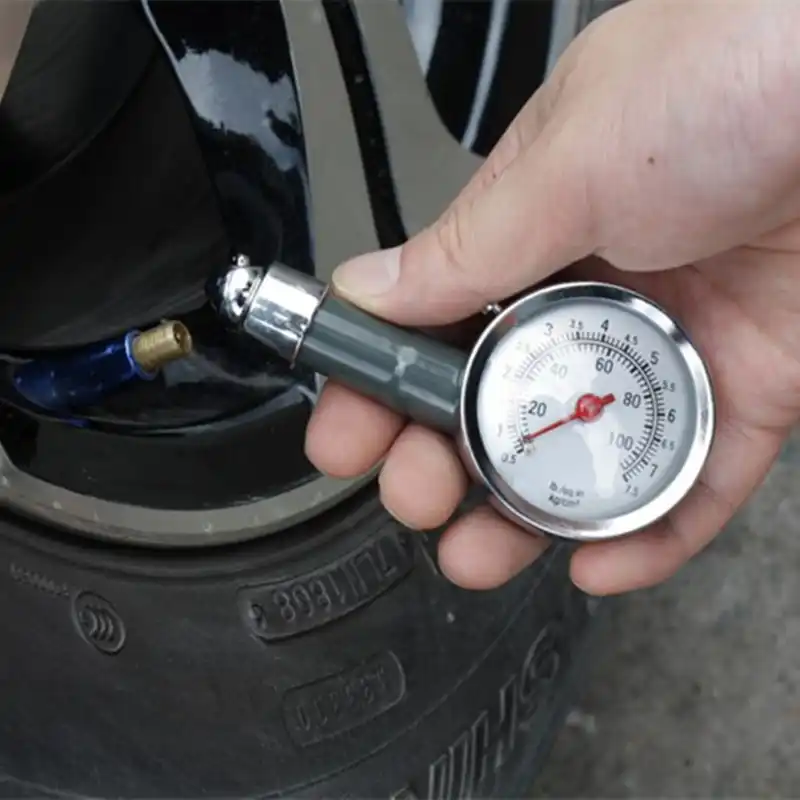 These situations can cause a tire failure which could lead to a crash and serious personal injury or death.
These situations can cause a tire failure which could lead to a crash and serious personal injury or death.
In addition to tire damage, improper inflation pressure may also adversely affect the ride and handling characteristics of the motorcycle. Under-inflation may cause the motorcycle to handle less responsively and to feel “sluggish.” Over-inflation makes your ride harsher and may cause changes in handling predictability.
Both under-inflation and over-inflation can lead to rapid and/or uneven wear since the tire contact patch is not optimal. For instance, too little pressure can lead to rapid wear of the tread shoulders, while too much pressure can lead to rapid wear of the center.
Follow the motorcycle manufacturer’s specifications for proper tire inflation pressure. Check the frame placard and/or the owners manual for that information.
Q: What about inflation pressure in other applications, like dirt or adventure (ADV) riding?
A: Inflation pressure for focused applications like off-road riding can vary drastically. It is best to follow the vehicle manufacturers recommendations.
It is best to follow the vehicle manufacturers recommendations.
Proper tire inflation pressure is one of the most important maintenance items of a motorcycle regardless of the road surface. Following manufacturer recommendations is critical to the performance characteristics of the motorcycle.
In specialized applications, such as off-road, it may be necessary to consult directly with the motorcycle and tire manufacturers to evaluate alternate tires and inflation pressures.
Dirt tires, especially motocross tires, are typically designed to operate at lower pressures than street tires. The size, shape, and tread patterns of these tires are optimized for, among other things, maximum contact with the loose terrain they encounter. However, low pressures can cause the tire to slip on the rim when subjected to high torque, which is why rim locks may be necessary.
The size and shape of adventure bikes varies almost as much as the type of terrain they cross. Lowering inflation pressure may give the tire more traction off-road to help conform to the terrain.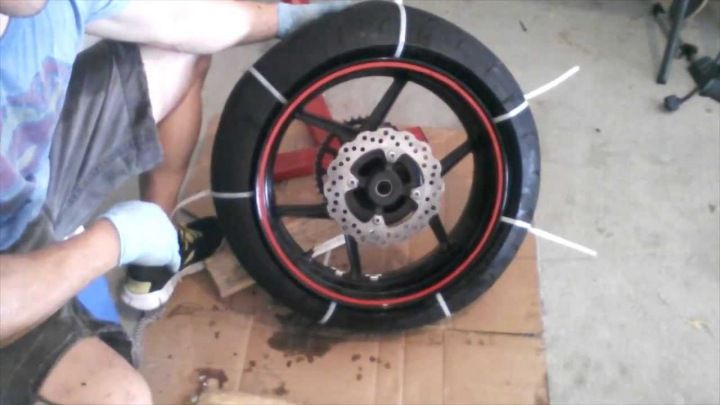 Speeds in these conditions must be reduced so the tire does not generate excessive heat. When lowering pressure to gain additional off-road traction, it is important to have some way of inflating the tire before getting back on the pavement. If the tires are not set to proper inflation pressure for highway speeds, they will generate excessive heat which may lead to a tire failure.
Speeds in these conditions must be reduced so the tire does not generate excessive heat. When lowering pressure to gain additional off-road traction, it is important to have some way of inflating the tire before getting back on the pavement. If the tires are not set to proper inflation pressure for highway speeds, they will generate excessive heat which may lead to a tire failure.
Therefore, read the motorcycle owners manual carefully for off-roading recommendations. In addition, don’t hesitate to reach out to the motorcycle and tire manufacturers with any questions and to discuss options—your safety and enjoyment of their products is their top priority.
Need more information?
You can download Bridgestone’s Motorcycle Tire Maintenance, Safety and Warranty Guide here.
Also, make sure to visit our Technology page and our Motorcycle Tire Data Book.
As long as one does not consider a motorcycle (or even a scooter) as more than just a mode of transportation, the art of riding is a bit hard to explain. Long, short, solo or group, trips are part of the whole experience of owning a motorcycle. In fact, hardcore enthusiasts often find the lamest excuse to go for a ride.
Long, short, solo or group, trips are part of the whole experience of owning a motorcycle. In fact, hardcore enthusiasts often find the lamest excuse to go for a ride.
As a wise man once said, “it is the journey that counts and not the destination”. This line generally stays true until you get a flat tyre and the nearest workshop is a considerable distance afar.
Popular motorcycle YouTube channel, FortNine has shared four hacks to inflate a flat tyre to double-digit PSIs without using an air pump. Keep in mind that you might have to carry some extra hardware (nothing large) on the trip to make this possible. Plus, the pressure life would be just enough to get you safely to the nearest puncture repair shop.
Since we are dealing with air here, a pair of Shrader barbs (refer video if you don’t know what it is) is required in addition to the siphon hose. Ensure that one of the barbs you have is a clip-on type. Put together, the system becomes a simple pressure equaliser.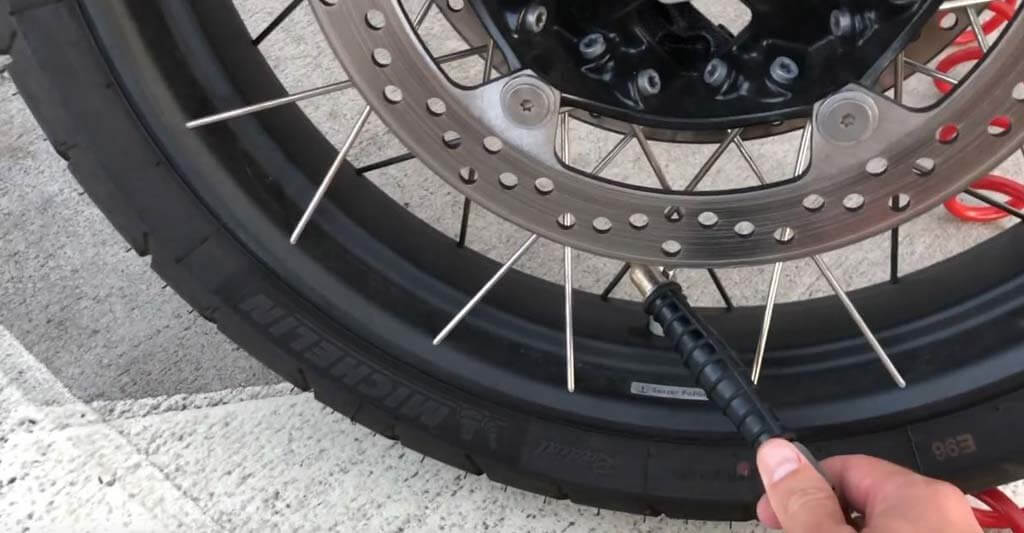 The clip-on end has to be attached to the valve stem of the flat tyre while the other end is connected to the healthy tyre.
The clip-on end has to be attached to the valve stem of the flat tyre while the other end is connected to the healthy tyre.
High-pressure air goes to the low-pressure region (flat tyre) and a balance can be attained between either tyre. If you are with a motorcycle group, a minimal compromise on donor air pressure would be possible.
A generous motorist can also help. Before taking air from a larger (or higher-pressure) source such as a four-wheeler tyre, confirm whether the barbs are tightly fit into the hose.
Carbon dioxide or CO2 gas has impressive compressibility. Thanks to this characteristic, compact cartridges (16g) that can fully inflate bicycle tyre are readily available on the market. Of course, motorcycles would need much more air than a bicycle. Hence, it is recommended to use a single 45g CO2 cartridge; the largest disposable example you can find easily.
You would still need a chuck (watch the video to understand its function) to connect a cartridge to the valve stem. Take extra care while playing around with CO2 cartridges as the reaction (evaporation of liquid carbon dioxide) is extremely endothermic (absorbs heat) and can even create frostbites. Riding gloves would provide enough protection.
Take extra care while playing around with CO2 cartridges as the reaction (evaporation of liquid carbon dioxide) is extremely endothermic (absorbs heat) and can even create frostbites. Riding gloves would provide enough protection.
This unpopular method may not be applicable for every motorcycle but in those which offer easy access to the spark plug. The process is way easier if the motorcycle does not have advanced electronics. Most importantly, it should have a kick-starter. What you need is the hose of a regular compression tester along with an extender hose fitted with a clip-on Schrader barb on one end.
Remove the most accessible spark plug and connect the hose arrangement between the spark plug well and the flat tyre. Now, all you have to do is start kicking the starter lever (or kick-starter) until the tyre attains reasonable pressure at the cost of uneven calf muscles.
Unlike the above methods, this is not recommended for the faint-hearted simply because it involves fire and a loud ‘pop’.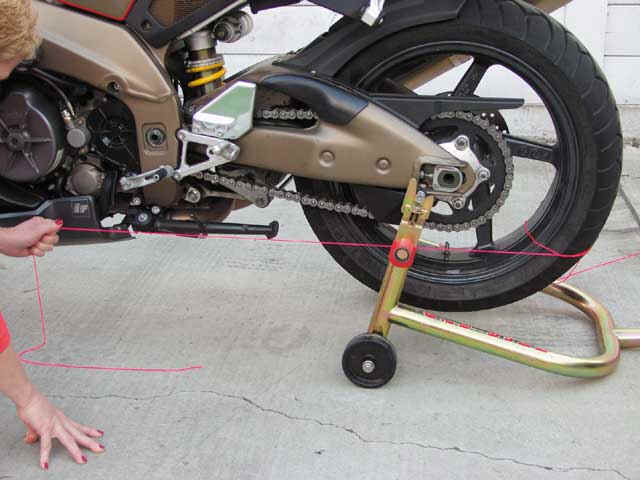 In the video, a WD-40 multi-use spray (popularly used as a lubricant, degreaser, rust remover, etc.) is used but any combustible spray would do the trick.
In the video, a WD-40 multi-use spray (popularly used as a lubricant, degreaser, rust remover, etc.) is used but any combustible spray would do the trick.
Firstly, you will have to remove the wheel (which itself requires some expertise). Since the tyre has no air pressure, its beads (inner edges) would have most likely come off the wheel rim. Using a needle nozzle, spray some combustible liquid inside the tyre at a few different locations. After that, spray the same as a ‘lubricating ring’ around the rim to make it easier for the tyre walls to slide in while also acting as a guide for the flame to reach inside.
From a safe distance, direct the flame onto the tyre using a lighter and the needle nozzle. If done right, the tyre should ‘pop’ into adequate pressure. However, depending on quality, the tyre valve might get damaged. Furthermore, the pressure generated will last only until the air cools down. FortNine has added a scientific explanation to this theory.
Depending on the type of soil, the pressure in the tires of a car, motorcycle or bicycle has to be varied in order to get the maximum flotation from the vehicle. But if in the case of a car, what to let down, what to pump up a tire is not difficult (I inserted the compressor into the cigarette lighter and just “business”), then in the context of “two-wheeled friends”, the problem is more acute.
Dmitry Zlenko
Many bikes come with compact hand pumps. It seems that you know as well as I do that while you “breathe” one and a half or two atmospheres into the tire with such a “magic wand”, you will get tired so that you don’t want to go anywhere. And here, you understand, the second wheel is in line! And the degree of reliability of this kind of plastic compressors leaves much to be desired: then some part will fall off, then the stem will bend, then the check valve will stick. In a single season on my bike, I scrap a couple of these "hand trainers." Yes, and an eight-year-old son without the help of adults is not able to pump up a wheel on his “friend” with such a device.
In a single season on my bike, I scrap a couple of these "hand trainers." Yes, and an eight-year-old son without the help of adults is not able to pump up a wheel on his “friend” with such a device.
Eh, to combine the ease of use of a car compressor with the compactness of a hand-held bicycle pump ... And while I was dreaming about this miracle, the well-known to all motorists manufacturer of electric compressors Berkut has already created such a “device”! Imagine, it looks like an ordinary bicycle pump, except that it is packed in an aluminum case and does not have a handle, which traditionally has to be pulled up and down. From one end of the Berkut Specialist VL-1000 there is a hole for screwing a small hose, and from the other end there are two buttons and a connector for recharging the pump from a 220 Volt network. On both ends of the pump, everything is closed with dust and moisture protective rubber plugs.
There is a mechanical pressure gauge on the hose, thanks to which you can determine the degree of inflation of the bicycle tires by touch, but what is called with the help of a precise instrument. At the end of the hose there is a fitting for a wheel valve (in the common people "nipple"). In fact, there are two fittings, one is screwed onto the other: this design allows the compressor to be used to inflate tires with “nipples” of different standards.
At the end of the hose there is a fitting for a wheel valve (in the common people "nipple"). In fact, there are two fittings, one is screwed onto the other: this design allows the compressor to be used to inflate tires with “nipples” of different standards.
The Berkut Specialist VL-1000 is turned on and off with the help of a large red button, which, as we said earlier, is located on the end of the pump. Nearby there is a smaller button - it is responsible for the operation of the LED flashlight. Why does a compressor need a flashlight? Well, don't tell me... If the need for pumping up the wheel arose after sunset, the built-in LEDs will help you quickly find the "nipple" and screw the fitting onto it. And to find in the dark the same cap from the nipple or some other “lost thing” with a flashlight is much easier than without it.
Does Berkut Specialist quickly inflate a 27-inch bicycle tire? Almost instantly. This accumulator compressor inflated a deflated bicycle tire to the rims to two “points” in 13 seconds! The instructions for this "gadget" say that it is not recommended to inflate more than two wheels up to 28 inches at a time, as this can lead to overheating of the pump. And if the wheels are of a larger diameter, then you need to take a break after "swindling" each wheel. Well, I don’t know, having pumped up two “twenty-seventh” wheels in a matter of seconds, the pump was still cool outside temperature. By the way, you can use the pump in the temperature range from minus 10 to plus 45 Celsius.
And if the wheels are of a larger diameter, then you need to take a break after "swindling" each wheel. Well, I don’t know, having pumped up two “twenty-seventh” wheels in a matter of seconds, the pump was still cool outside temperature. By the way, you can use the pump in the temperature range from minus 10 to plus 45 Celsius.
If we continue the topic of the technical characteristics of the Berkut Specialist VL-1000, it should be noted that in one minute the pump is able to pump up to 10 liters of air from the atmosphere into the tire, and the maximum pressure given out by the device is as much as 8 bar!
Although the Berkut Specialist VL-1000 is positioned as a bicycle compressor, we decided to check whether it can become a friend for motorcycle tires. A pit bike wheel is about the same diameter as a bike tire, but due to its higher profile and wider width, it requires a significant amount of air. But our test subject in some 34 seconds stuffed the rear tire of a pit bike up to two atmospheres. It took ten seconds more to inflate the front tire from 0 to 2 units (the fact is that the front wheel is one and a half times larger than the rear).
It took ten seconds more to inflate the front tire from 0 to 2 units (the fact is that the front wheel is one and a half times larger than the rear).
It can be said unequivocally that this battery bike compressor is the ideal solution not only for "pedal horses", but also for motorcycles or scooters. Indeed, in the end, on two-wheeled vehicles there is no 12-volt outlet into which an electric car compressor could be inserted, and if we talk about pit bikes, then many of them do not have not only a “cigarette lighter”, but even a battery. Naturally, this pump will be a great help in everyday life: pumping up the same soccer ball or inflating tires in a baby stroller with the Berkut Specialist VL-1000 is as easy as shelling pears.
Subscribe to the Avtovzglyad channel:
off-road, spare parts, accessories, bikes, motor vehicles
contents
Tubeless tyres, or also called tubeless (TL) which is its term in English, are wheels that have a pressure valve built into the rim and which due to their design do not need an inner tube. The first wheels had a camera.
The first wheels had a camera.
Generally, for large motorcycles, we can apply about 2.4 or 2.5kg/cm2 in the front and 2.8 or 2.9kg/cm2 in the rear.
From a safety point of view, a tubeless tire is better because of its design and construction, which allows you to continue on to the next service station. On the other hand, tube tires, although cheaper, are not the most reliable to drive.
The air that provides the internal pressure in a tubeless tire will be located between the cover and the rim of the same.
Tubeless tires, also known as tubeless, are tires without an inner tube.
Place the gauge head on the valve and pressurize, you will hear a small whistle that will push the bar of the gauge (this will depend on the gauge you are using) showing how many pounds of pressure (PSI) your car tires have.
Motorcycle tire pressure 125
For road traffic, average motorcycle tire pressure 125 ranges from 2.3 bar (front) to 2.5 bar (rear). With luggage or a passenger, the pressure in the rear tire must be increased by 0.2 bar.
Tubeless tires are a type of wheel that does not have an inner tube and whose use in the automotive world has gradually spread throughout its history.
An English term that literally means "no airbox". In general, it refers to tires that do not have a proper chamber, that is, those in which pressure maintenance is assigned solely to the tightness of the rim-tire system.
In general, it refers to tires that do not have a proper chamber, that is, those in which pressure maintenance is assigned solely to the tightness of the rim-tire system.
Rims are the metal parts that the tires sit on and are designed to support the weight of the vehicle, absorb road shocks, transmit traction, absorb engine torque when shifting gears, absorb braking force on asphalt. and keep the direction…
Specifications:
| Forward: | 70/90 -17 38P |
|---|---|
| pressure wheels: | 2.00 bar (front only) |
| steering wheel: | 1.40 x 17 TT/alloy |
| Rear: | 80/90 -17 50P |
| pressure wheels: | 2.80 bar (rear only) |
This is a donut-shaped element found on many vehicles that maintains compressed air inside the tires. The air chamber is made of materials that prevent leakage and has valves that allow air to be introduced or removed from its interior.
The air chamber is made of materials that prevent leakage and has valves that allow air to be introduced or removed from its interior.
Radial Tubeless: Again, this indicates that we are dealing with a radial construction tire, and “tubeless” means that it was designed to be used without a tube.
The minimum tread depth must be 1.6 mm. It is recommended to purchase an inexpensive tread depth gauge to ensure that your tires meet the minimum legal requirements.
Low profile tires also provide better “touch to the car”, the driver has better control of the car and can better predict its behavior. Also, the wobble is much less noticeable.
You will notice how it wears, especially if it takes time at less pressure than recommended. Transportation of a tire in a flat state increases the wear of its outer edges, the shoulder areas of the tire. You will also notice that the tire is hotter than the others.
Transportation of a tire in a flat state increases the wear of its outer edges, the shoulder areas of the tire. You will also notice that the tire is hotter than the others.
-Maximum load is expressed in pounds. (lbs) and in kg (kilograms), as well as the maximum internal pressure in pounds per square inch (psi).
And adds that the correct pressure is: Front tire: 28 psi (psi) Rear tire: 30 psi (psi)
The PSI value in pressure refers to pounds per square inch (pounds per square inch, as it is abbreviated in English). It is one of the most commonly used units of pressure, although not the only one: other units are used, such as the bar, which is equivalent to 14.5 pounds.
On the technical side, tubeless models allow us to ride with less pressure and therefore improve traction in technical or muddy areas. Traction is also improved with the tubeless tire, and punctures are significantly reduced due to the absence of pinched tubes.
Traction is also improved with the tubeless tire, and punctures are significantly reduced due to the absence of pinched tubes.
What is lost in comfort is gained in safety. In addition, the driving resistance will be lower and fuel consumption will be reduced. The pressure must be measured cold, as it rises to more than 0.5 bar when hot.
175: This is the measurement in millimeters of the tire width from side to side. 65: this is a measure of the tire profile, its height. This is a percentage based on the width of the wheel. In this example, the tire profile is 65% of the width.
Then we have the number 15. This number expresses the inner diameter of the tire in inches, which is equal to the height of the rim. However, this tire must be mounted on a 15" rim.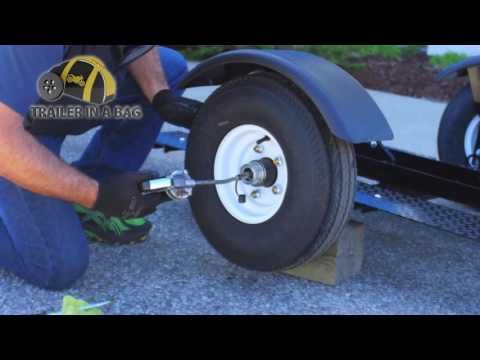
What is a tubeless wheel
Generally speaking, tubeless wheels are tires or tires without an inner tube.
Pros and cons of each type of coating
The difference between tubeless and Tubeless Ready tires is that the finished tires require puncture fluid to seal the coating because they do not have the inner coating of tubeless tires.
When the pressure is very low.
While some car fires are caused by accidents, the most common cause is a problem with the car's wiring, fuel system, or even cigarettes left in the car that set the engine on fire.
Next, we share with you the first tire classification so that you can start to get acquainted and choose the one that suits you best.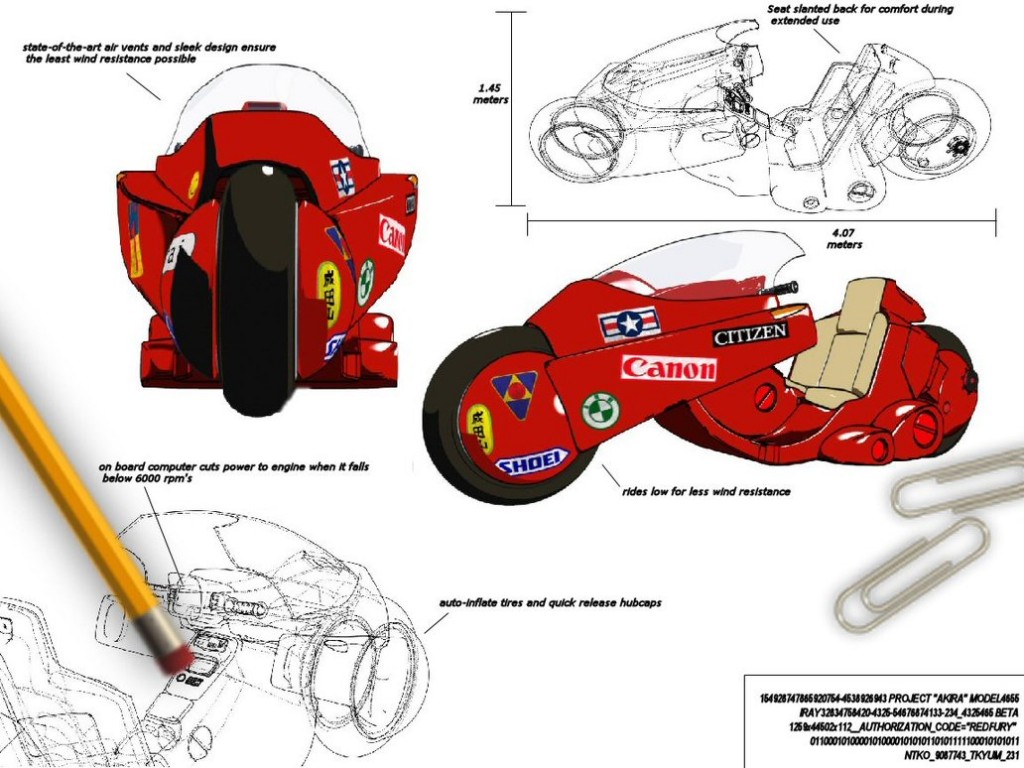
What tire pressure should we put in?
“Recommended cold tire pressures can be found in the vehicle owner's manual and on the tire label. It's typically 30 psi for a small car, 36 psi for a medium car, and 42 psi for a large car."
On rim size P 185/60 R 14, the MAXIMUM pressure is indicated on the side wall. 350 kPa (51 PSI), where 350 kPa refers to a unit called kilopascals. PSI in English (pounds per square inch) pounds per square inch. Shows 51 pounds of pressure.
From a safety point of view, a tubeless tire is better because of its design and construction, which allows you to continue on to the next service station. On the other hand, tube tires, although cheaper, are not the most reliable to drive.
A tube tire loses air quickly, endangering passenger safety. For their part, tubeless tires prevent accelerated air loss.
As a precaution, all tires should be replaced after ten years, even if they are in good condition and the tread wear indicator has not been reached.
Tires must not be stored outdoors in summer or winter, even in a protective case. Think of a cool, dry, slightly ventilated area and of course out of direct sunlight. A basement or other controlled environment is ideal.
These tires have the disadvantage of faster wear and poor grip on wet surfaces.